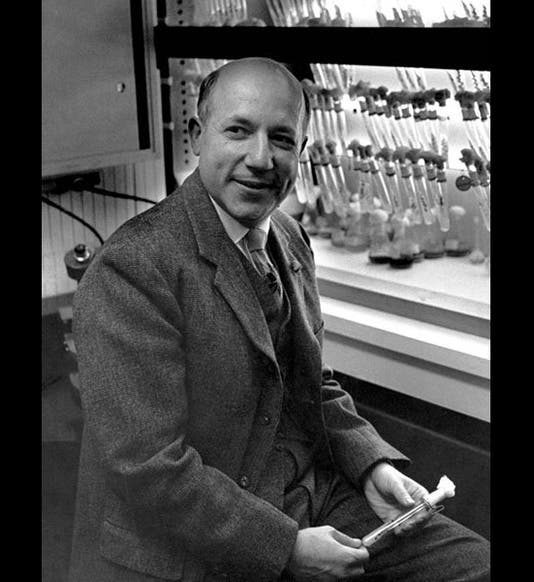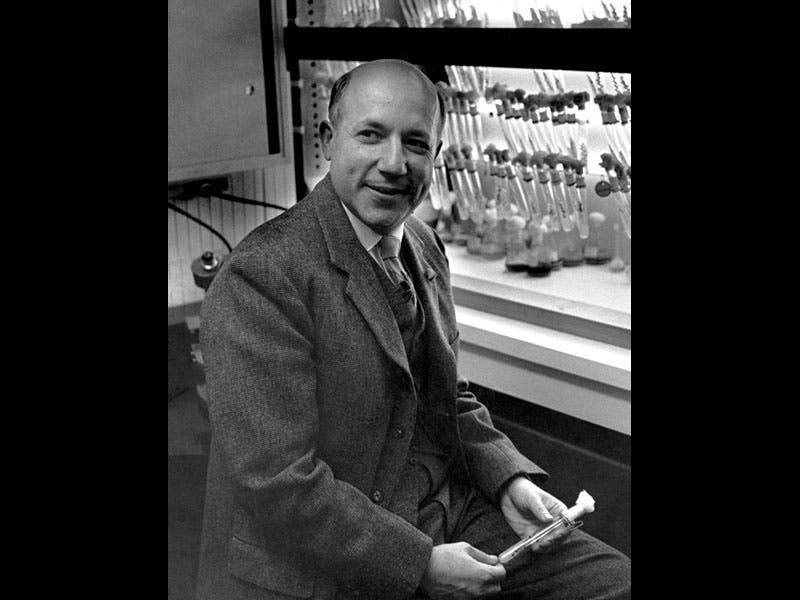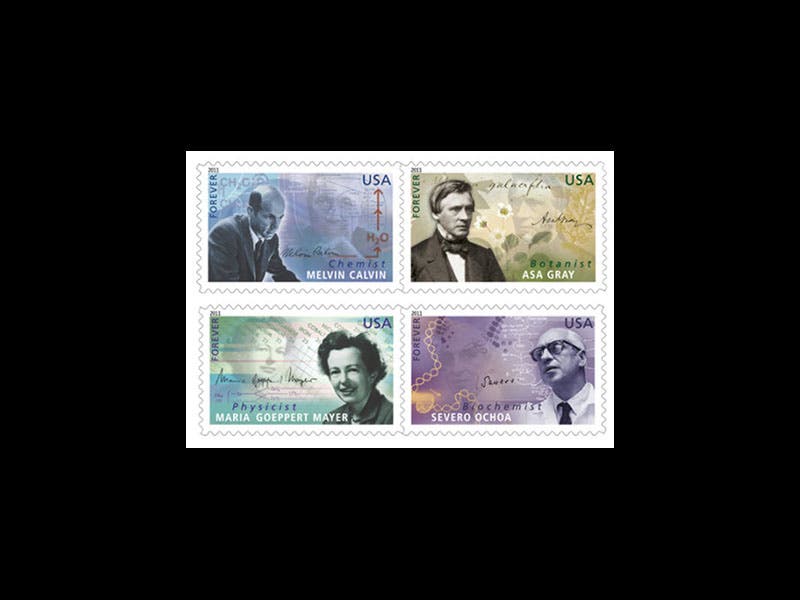Scientist of the Day - Melvin Calvin
Melvin Calvin, an American chemist, was born Apr. 8, 1911 (first image). Calvin came to at the Radiation Laboratory at the University of California--Berkeley, where E.O. Lawrence in 1937 had built a 37-inch cyclotron, a device to accelerate protons to near the speed of light and smash them into other atoms, and after Calvin arrived, Lawrence began working on a 60-inch device. The “60-inch” simply means that the circular vacuum tin, where the protons spiral out and accelerate, was 60 inches across, or the size of your dining room table. The magnets surrounding the tin were the size of your house (second image). By the 1940s, the cyclotron was making all sorts of new isotopes, such as carbon-14, but no one was using these for research. Calvin, who was interested in the process of photosynthesis, decided to use carbon-14 as a tracer to try to determine the exact path of carbon atoms, which enter the chloroplast as carbon dioxide and emerge as glucose. This he was able to do, although it took many years, and 21 papers, all of them titled: “The Path of Carbon in Photosynthesis N,” where N stands for a number from I to XXI. You can see above a photo of one of his experimental set-ups, with the glowing green algae about to be subjected to an infusion of carbon-14 (third image).
Calvin’s success at unraveling the carbon pathway brought him the Nobel Prize in Chemistry in 1961. Interestingly, the prize the year before had gone to Willard Libby, who had figured out how to use naturally occurring carbon-14 as a tool for archaeological dating. Melvin was further rewarded with a postage stamp in 2011, when he was included in the third issue of the American Scientists collection. These were issued every three years, beginning in 2005, and so far only 12 American scientists have been so honored. In the photograph of the block of four above, Calvin is at the upper left (fourth image). If the stamp were a reliable guide (which it is not), it would appear that Calvin had discovered that, during photosynthesis, H20 is converted to USA, a very exotic compound of uranium, sulfur, and argon.
Dr. William B. Ashworth, Jr., Consultant for the History of Science, Linda Hall Library and Associate Professor, Department of History, University of Missouri-Kansas City. Comments or corrections are welcome; please direct to ashworthw@umkc.edu.










